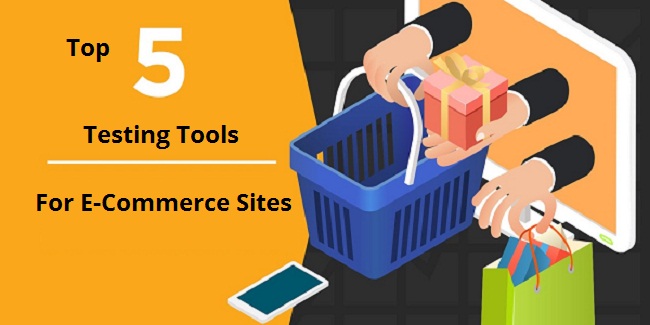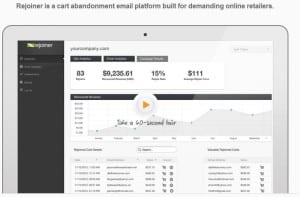5 tools everyone in the E-commerce industry should be using
Yes, it’s a secret no more, Retail or e-commerce is bigger than big.Billions are being pumped in and investors are queuing up like never before. From start-up’s to behemoth giants, everyone seems to be getting on the e-commerce bandwagon and the exacting consumer isn’t far behind. This is one giant bubble that isn’t going to pop anytime soon.
Quite the contrary instead! The ecommerce industry has seen a major improvement on every front, be it in the logistics, delivery, payment modes or even the basic user interfaces of e-tail sites.
That said, it is important to understand that a successful ecommerce website does deal with a lot of content, images and secure payment gateways. What’s more, the site has to be attractive, engaging and must keep the user’s interest occupied at all times. Any lapse on any of these factors and the finger is ready to move. To a rival website no less!
So what should an ecommerce website do in order to keep the user engaged and motivated to ‘buy’. We list a few tools that will go a long way in ensuring that your ecommerce site remains top-of-the –mind while at the same time delivering a seamless user experience.
Live chats
Zopim
An experienced ebuyer probably does not have too many questions to ask, but a new one definitely does. And any E-commerce site owner will tell you that a customer is worth their weight in gold, old or new. So it makes sense that you ensure to assist them in their queries in the best possible manner. Having a trained customer support team dutifully answering customer queries will go a long way in ensuring brand loyalty and building trust.
Live chats behave like the trailing, ready on the beck of a call yet conspicuously waiting on the side, sales persons that we see in brick and mortar stores. ZopIM chats function exactly the way the dutiful sales people do, except in this case they are more like e-assistants.
ZopIm chat does not require any complicated installation procedures and it is good to go for anyone newly starting with their ecommerce site. Besides, ZopIM also has a feature of Google Translate.
Abandoned carts
Rejoiner
How many times has it happened that the customer almost purchased those products added to the cart and then for no apparent reason at all abandoned it altogether (and left behind a trail of unanswered questions). Yes, this does happen and the rate of incidence of abandoned carts is a source of pain and agony to many an ecommerce website.
How to figure out the reason for abandonment? Online tools such as Rejoiner will help you solve some of this dilemma. At least a large part of it. Rejoiner will help you to email customers remarketing the abandoned cart besides assisting you in personalization of the mail. The tool helps convert abandoned carts into new customers. Not just that, it’ll also measure the efficacy of the email and create a good CTA (call to action). Rejoiner offers a 14-day free trial with the trial beginning with your first converted customer.
Tracking tools
Woopra
Woopra is a real-time analytics tool that simplifies and feeds you live visitor data and allows you to view it on your dashboard.Woopra’s platform can be customised to suit your needs besides adapting uniquely to the business aspect of your site. It works by a code placed in the header section of the site, thereafter which Woopra instantly starts sorting the real time visitor data on to your dashboard.
Customer Feedback Tools
Suggestion Box
This is by far one of the most important tools for any ecommerce site.Customer feedback is paramount and so it’s important to use a good feedback tool. SuggestionBox is a suggestion management system where you can place the SuggestionBox on to the site with a widget.
Some of the smart features such as message broadcasting, private messaging and auto-responders keep the followers updated and in turn give your site a good recall value. As a site owner you can give timely updates and intimate them on the status of their suggestions. But there’s one thing though, customers can also make a SuggestionBox page for your site/ brand ,in which case you need to check if a SuggestionBox already exists.
Alternatively customer feedback tools such as honestly, feedbackify and uservoice are equally good.
Competitor Analytics tools
SEMrush
While there is no need to model your online marketing strategy based on your competitors tactics, there are some valuable lessons that can be learnt when analysing competitor data. SEMrush Analytics reports gives you insights into your rivals strategies for display advertising, organic and paid search and link building.
Further, you can glean organic info such as the competitors’ keywords, keyword volume and their positions, monitor new rivals, or simply do some organic research by monitoring position changes of domains and video advertising research among other useful tools. SEMrush is not a free tool; however there are some limited complimentary organic, advertising and backlinks reports that you can avail of when you sign up with them.
What’s more, you can cross, combine and visualize SEMrush data to instantly compare rival domains besides getting a grip on the keyword difficulty. SEMrush’s Chart Tools allows you to assess the efficacy of the competitors paid and organic search strategies.
There’s a lot more that you can do with this tool and these insights really do help when you do decide on an actionable game plan armed with complete info about your site as well as your competitors.










